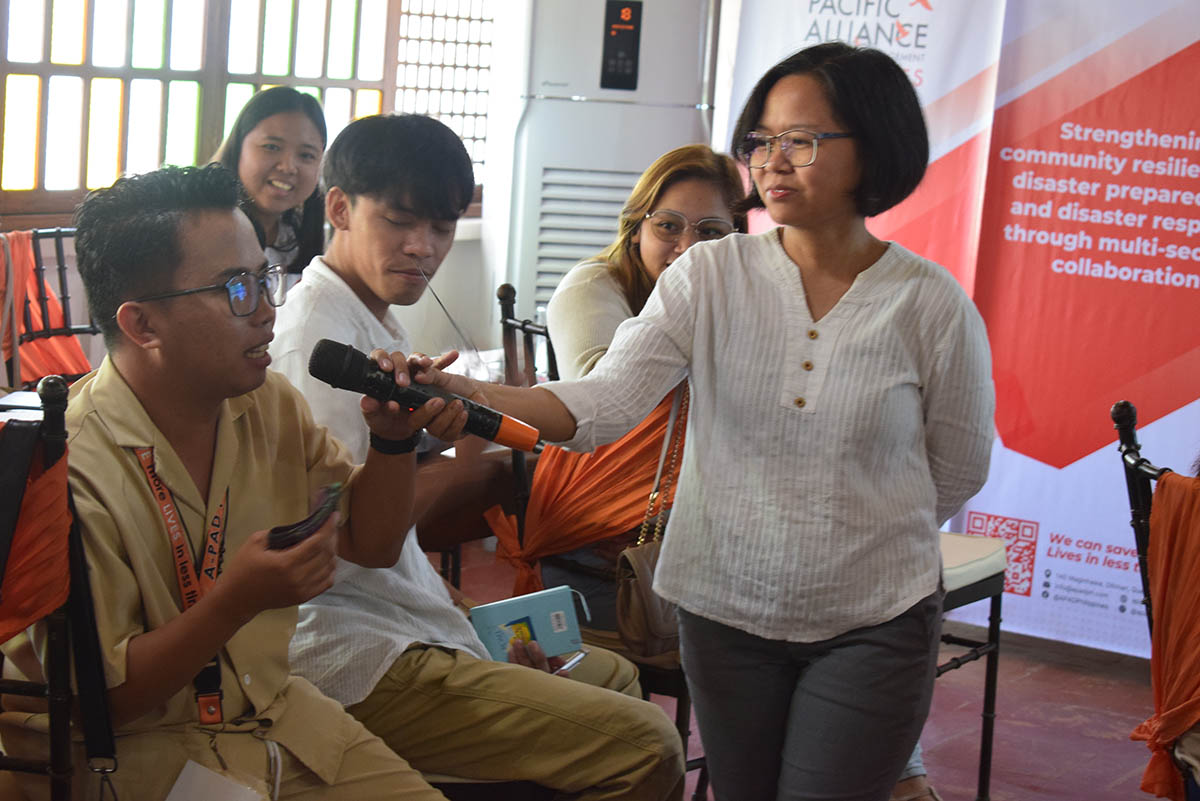
The Asia Pacific Alliance for Disaster Management Philippines (A-PAD PH) rolled out a national training program designed to strengthen disaster preparedness and climate advocacy through social media.
More than 60 Human Resource Network (HRN) volunteers, including students, educators, and community advocates, participated in the multi-leg series held in General Santos City, Legazpi City, and Cebu City throughout May.
Participants learned how to use multimedia storytelling and digital tools to raise awareness on climate issues, advocate for disaster mitigation and combat mis- and disinformation especially during disasters.
“In times of crisis, credible, accurate and timely information can save lives,” said A-PAD PH Executive Director Athea Peñaloza. “This initiative empowers youth to use social media not only for expression but for action so that we build a broader culture of resilience and shared preparedness,”
The first leg of the training was held on May 3 at Avior Hotel in General Santos City, where participants attended sessions led by Jorie Mae Balmediano of the Office of Civil Defense (OCD) Region 12 and Harlem Jude Ferolino of the Philippine Information Agency (PIA) Region 12. Topics included risk communication during emergencies and methods to identify and counter disinformation online.
“Masarap sa pakiramdam na makita mong may epekto yung ginagawa mo,” shared Cinderella, another HRN volunteer. (“It feels good to see that what you’re doing has an impact.”) “Sa bawat caption o post na ina-upload mo, pwede kang maghatid ng tamang impormasyon na pwedeng makapagligtas ng buhay.” (“With every caption or post you upload; you can deliver accurate information that could help save a life.”)

In Albay, among the country’s most disaster-prone provinces, the Bicol leg emphasized developing digital content that resonates with local realities. Facilitators included Karla Thea Omelan of OCD-Bicol and Salvacion Altea of PIA-Albay.
The third leg, conducted in Cebu City, brought together a diverse group including youth leaders, journalists, and private sector representatives. Broadcast journalist Annie Fe Perez-Gallardo and development communicator Kei Valmoria Bughaw led sessions focused on crisis storytelling and social media advocacy.
In all three training legs, Session 3 on multimedia storytelling was facilitated by Dada Grifon, A-PAD PH Communications Coordinator, where participants learned hands-on skills in making compelling content, pre-production, and shooting, culminating in the creation of their own “Resilient Voices” advocacy videos.
“I usually stick to writing, but this training taught me how to use video to share truthful, timely messages,” said Kylene Abaliana, Editor-in-Chief of The Quill from Holy Trinity College. “It’s about choosing the right platform and telling the story in a way people will understand.”
Building a Culture of Resilience using Social Media
The training covered three core objectives: understanding social media’s role in disaster resilience; creating platform-specific content for different audiences; and designing campaigns that promote climate awareness and preparedness. Participants produced infographics, short videos, and TikTok reels highlighting real stories and local solutions.
“We need to be mindful of what we post and how it affects others,” said teacher and HRN volunteer Mark Ugarte. “This kind of training helps us guide not just ourselves, but also the communities we serve.”
A-PAD PH plans to expand the program to more regions in the coming months. As the climate crisis escalates, the organization emphasizes the need for local voices and digital advocacy in disaster communication.
“We can’t do this alone,” added volunteer Kenneth Dela Pena. “Government agencies, schools, and civil society must work together to strengthen community preparedness.”
To view the participants’ work and stay updated on the initiative, visit A-PAD PH’s official Facebook page.


